This traditional dish brings the flavors of Spain to your kitchen in an easy, satisfying one-pan meal.
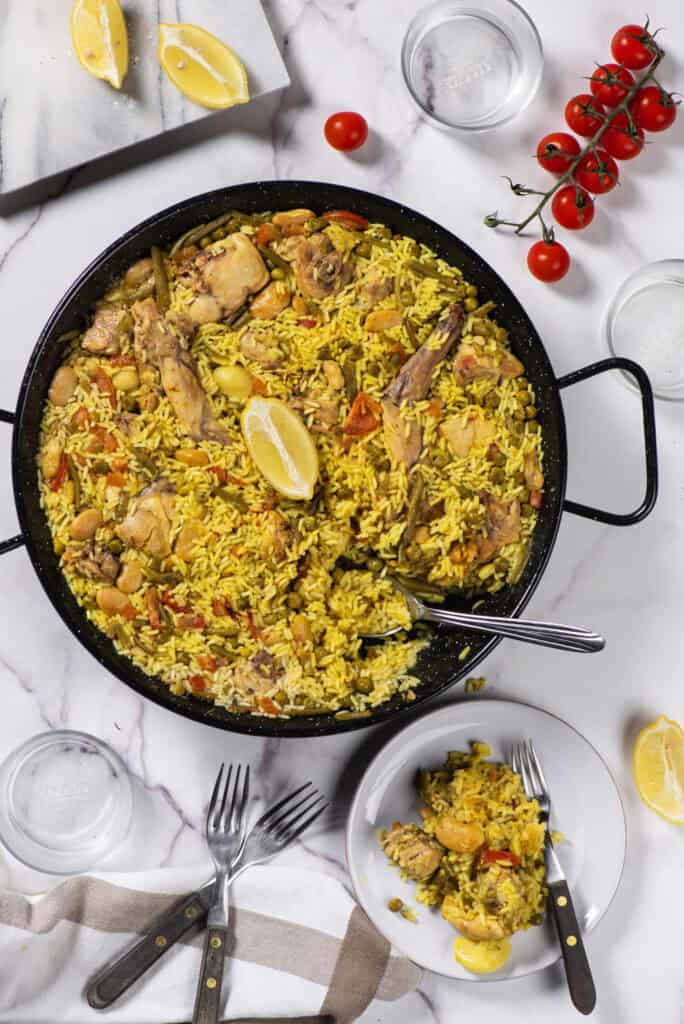
There are two things I love most in the kitchen. First is a one-pot meal. The fewer dishes I have to wash, the happier I am. The second is discovering recipes rich in tradition, culture, and flavor. I love to travel and sample unique local dishes. One of those meals that really impressed me was paella, a traditional Spanish blend of rice, meat, vegetables, and spices.
The first time I tried it, I knew I’d have to find paella recipes I could make at home. I’ve tried quite a few over the years—some pretty good and some so far off the mark that I would not even call them paella. When I found this paella Valenciana recipe, I knew my search was over. I had found the perfect paella recipe—and now you have, too!
What truly makes this paella Valenciana recipe such a hit is its unique, bright, and delicious flavors. The saffron, paprika, rosemary, and thyme marry together into an aromatic and complex flavor profile. The tender, juicy chicken and rabbit add rich undertones to the savory garlic, earthy beans, and acidic tomatoes for a hearty and inviting meal. Paella gives flavors that are both robust and light in a way that makes you keep coming back for more.
The cooking time keeps this dish in my Sunday dinner rotation rather than my weeknight options—but the easy cleanup of a one-pot meal makes up for it!
Is Paella Valenciana Healthy?
Paella valenciana is a nutritious dish that can be part of a healthy diet when enjoyed in moderation and balanced with other nutrient-rich foods. It features lean meats, a variety of beans, vegetables, and olive oil, which together provide a good source of protein, fiber, vitamins A and C, and minerals like iron and calcium. The use of olive oil and vegetables contributes heart-healthy fats and antioxidants, while the beans and vegetables support digestive health. The calorie count per serving is moderate, but the cholesterol and sodium are fairly high, which may be a concern for those monitoring heart health or salt intake.
You could make a vegetarian-friendly version of this dish by replacing the chicken and rabbit with additional beans or plant-based proteins, though this would create a very different style of paella.
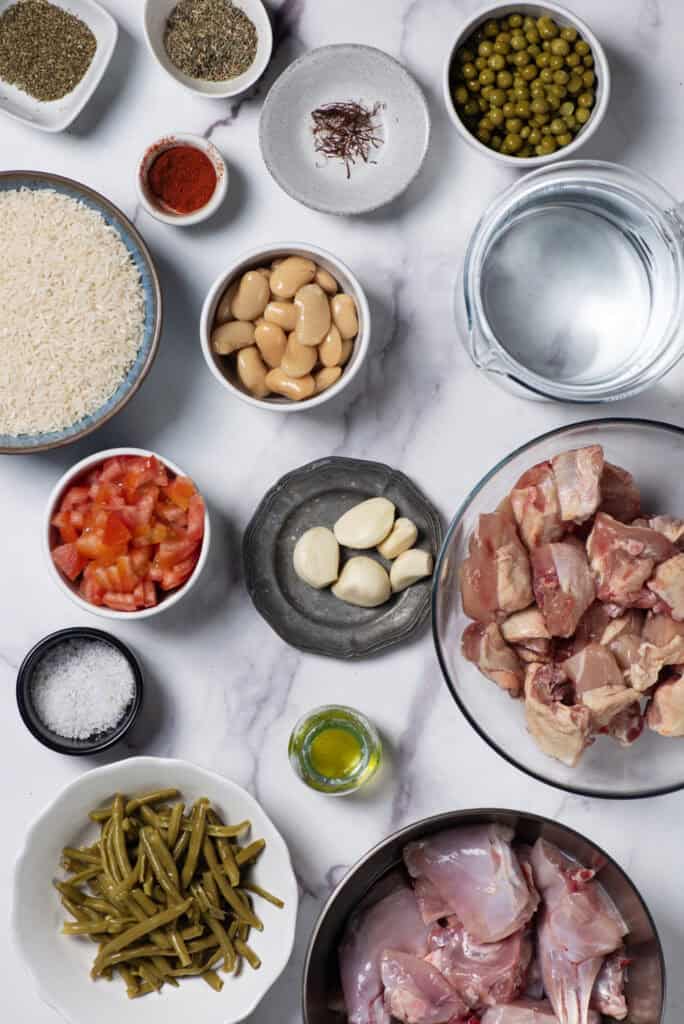
A Brief History Of Paella
The origins of paella Valenciana are rooted in the region of Valencia, Spain, where rice cultivation began after the Moors introduced rice and irrigation techniques in the early Middle Ages. While rice dishes existed for centuries, the dish we recognize as paella Valenciana emerged in the rural areas around the Albufera lagoon in the 19th century. Early paellas were hearty meals prepared by farmers and laborers using whatever ingredients were available—typically rice, local vegetables, beans, snails, and meats such as rabbit, duck, or chicken. The name paella comes from paellera, the name of the wide, shallow pan in which the dish is cooked, a design that evolved to maximize the rice’s contact with the heat.
Paella Valenciana represents a blend of cultural influences: Romans contributed irrigation and the concept of the pan, while the Moors introduced rice and key spices such as saffron. Over time, paella became a symbol of Valencian identity and a communal meal, traditionally cooked over an open fire and shared directly from the pan.
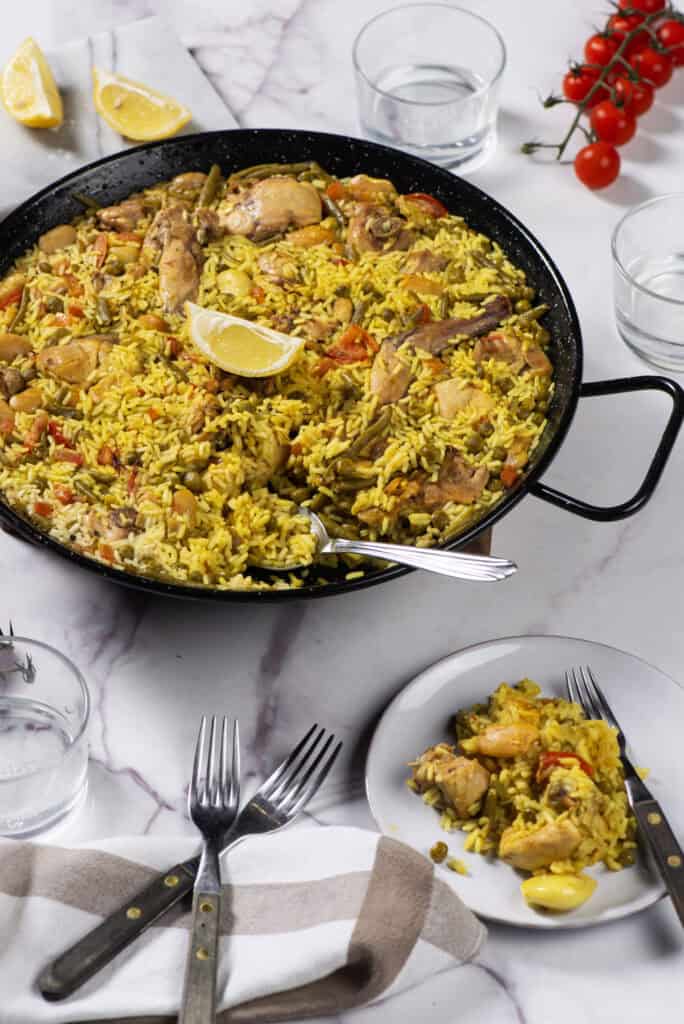
How Do I Store Leftovers?
Leftover paella tastes even better than the fresh dish, in my opinion, as the flavors have time to blend together. To store your leftovers, let the dish cool to room temp, then transfer it to an airtight container. It’ll keep in the fridge for up to 4 days, but you’ll get the best flavor and texture in the first 2 or 3 days. You can also freeze paella in a freezer-safe, airtight container for up to 3 months. Thaw overnight in the fridge and reheat on the stovetop with a little olive oil or broth to help restore moisture and prevent the rice from drying out. Always ensure the paella is heated to a safe internal temp of 165°F before serving.
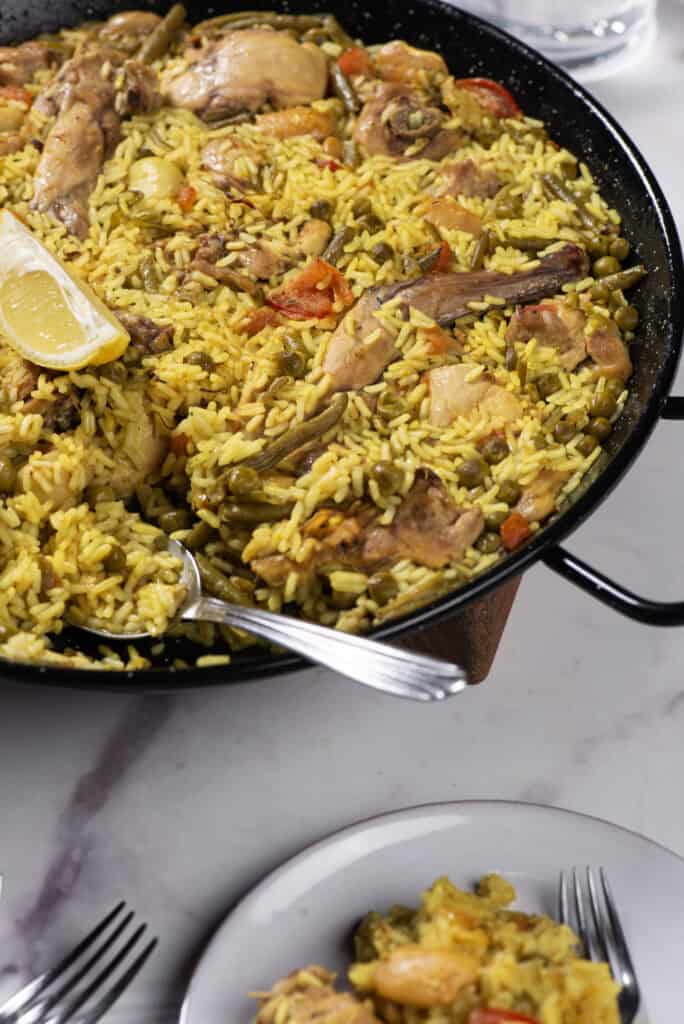
Serving Suggestions
I recommend pairing your paella Valenciana with a good wine like they do in Spain. An oaked Chardonnay or a pitcher of White Sangria would complement the flavors nicely. You can also pair your meal with a Roasted Red Pepper And Almond Salad or perhaps a plate of Spanish Meatballs. Finish on a light, sweet note with this easy No-Bake Key Lime Pie.
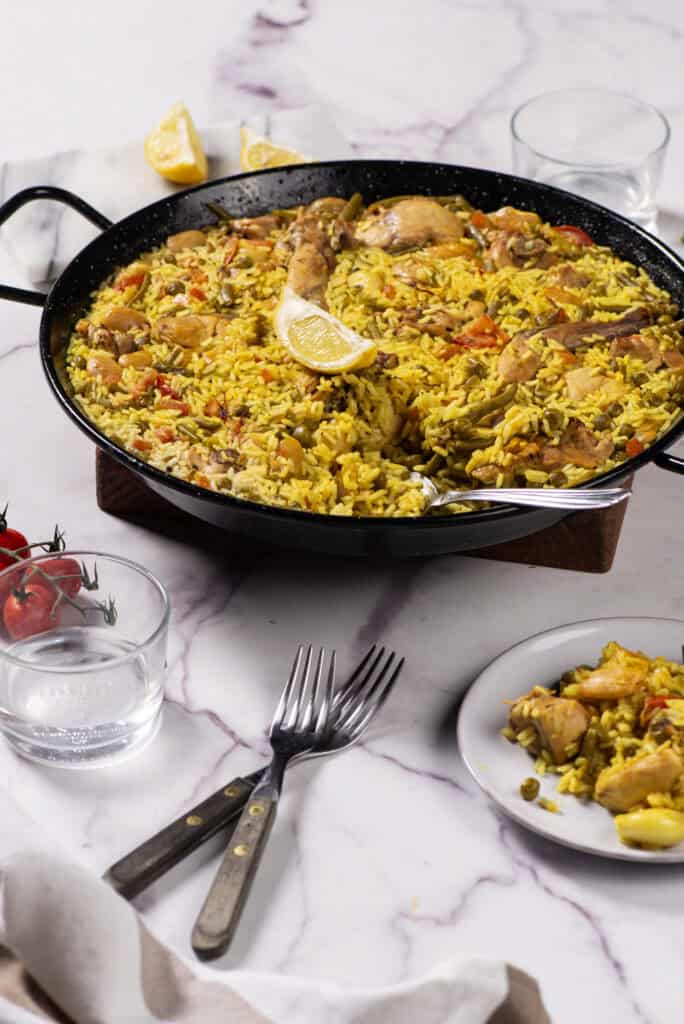
Recipe
Ingredients
- 1 tablespoon olive oil
- 1/2 whole chicken deboned and cut into pieces
- 1/2 rabbit deboned and cut into pieces (optional)
- 1 head garlic cloves separated and peeled
- 1 medium tomato finely chopped
- 1 cup butter beans
- 1 cup green peas
- 1 cup green beans trimmed
- 1 teaspoon sweet paprika
- 6 cups water
- Salt to taste
- 1 pinch saffron threads
- 1 pinch dried thyme
- 1 pinch dried rosemary
- 3 cups short-grain white rice
Instructions
- Preheat a paella pan over medium-high heat. Add olive oil, chicken, rabbit, and garlic. Cook until browned, then move meat to the sides.

- Add tomato, butter beans, peas, and green beans to the center of the pan. Season with paprika and stir to combine.
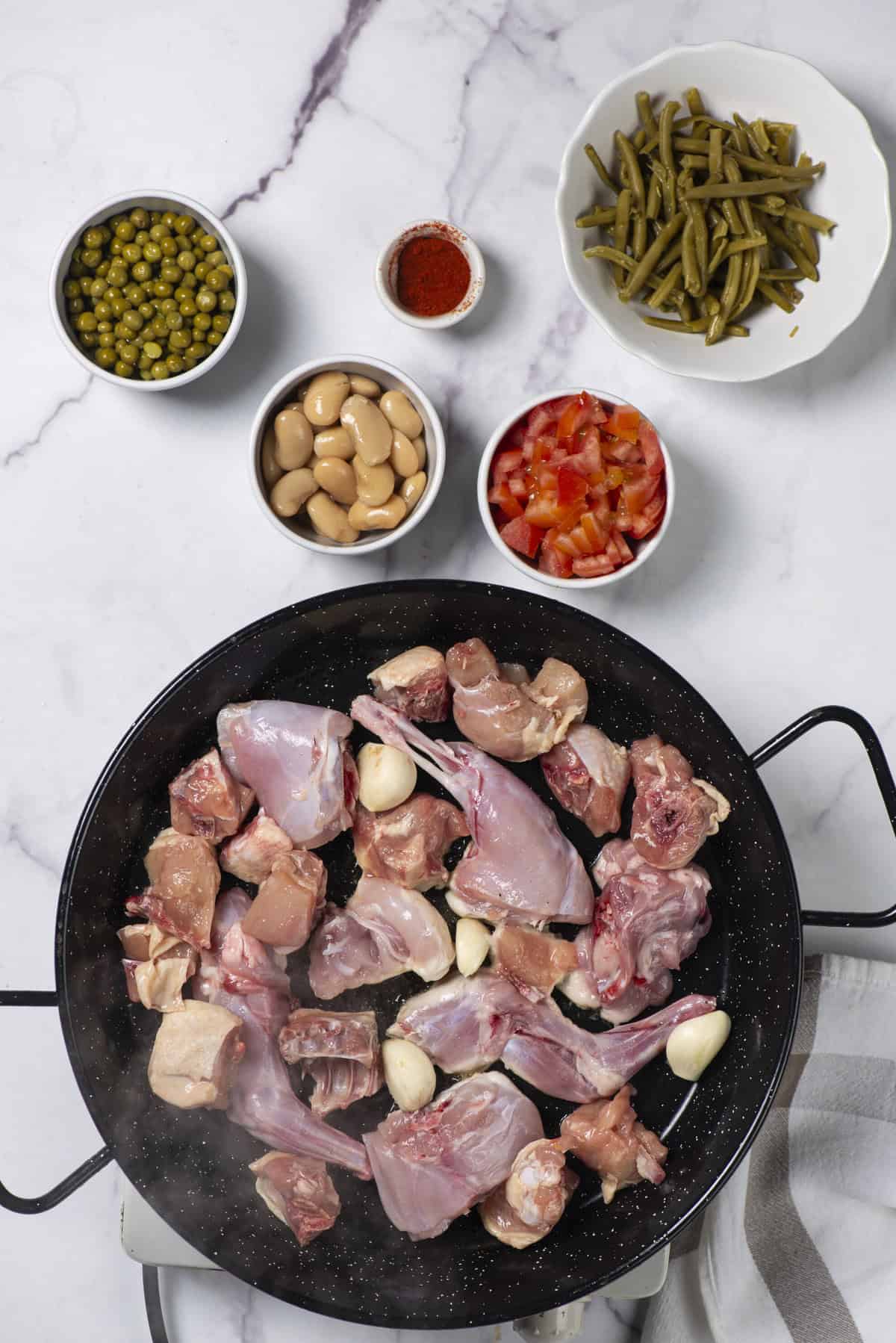
- Fill pan with water. Bring to a boil and simmer for 1 hour to create a broth.
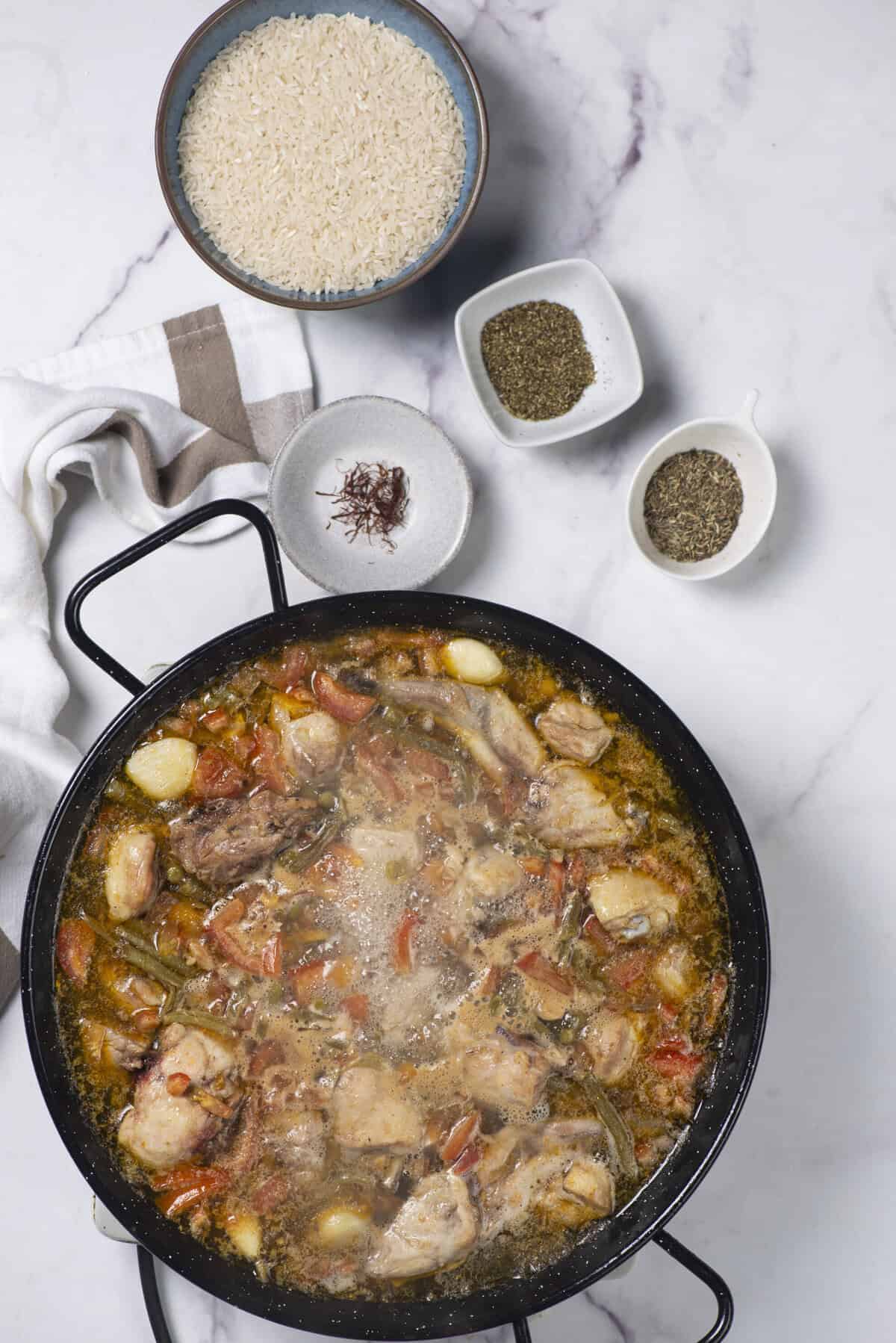
- Season broth with salt, saffron, thyme, and rosemary.
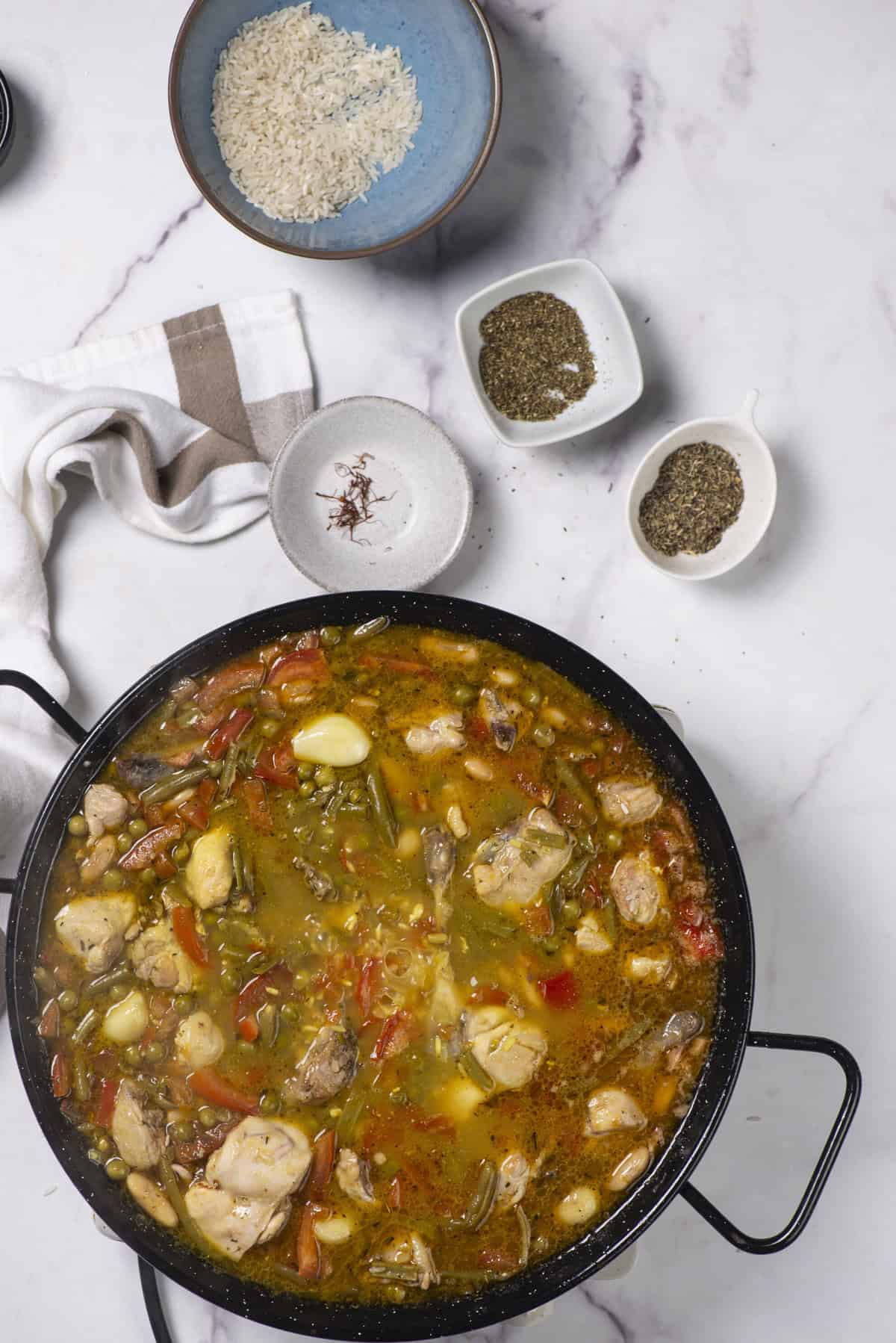
- Stir in rice. Cover, reduce heat to low, and simmer until liquid is absorbed, about 20 minutes.
- Serve immediately.
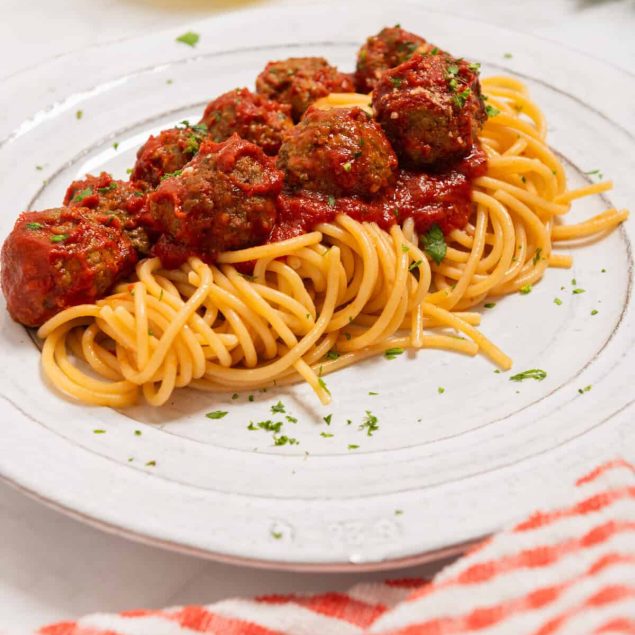
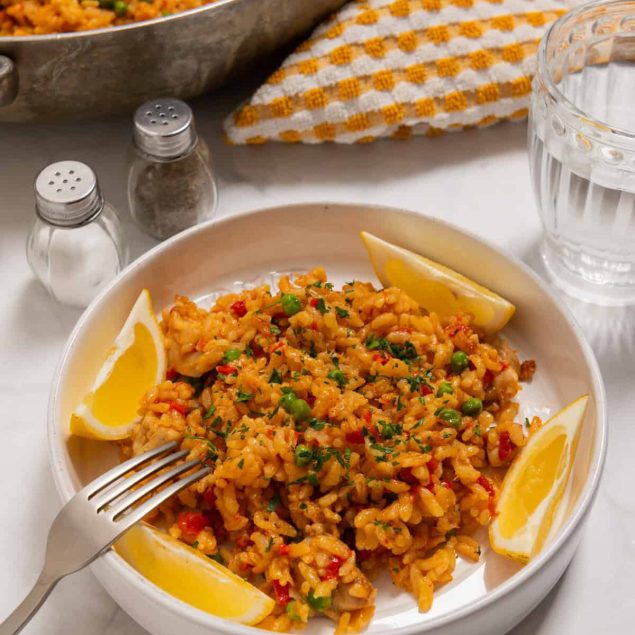
Leave a Comment